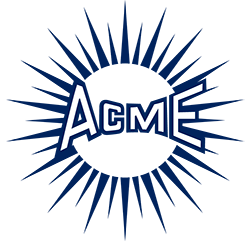With the exception of the noble metals such as gold and platinum, metals are intrinsically chemically unstable. It is favorable for them to revert to a chemical compound, such as an oxide, of the type they are found in nature. They are said to corrode when this reversion occurs by a chemical process (electrochemical), most typically in practice by a reaction with oxygen in the presence of water. Corrosion is an oxidation-reduction reaction; the two reactions occur at the same rate and are the reason metal corrodes at a finite rate. All the ingredients for the reaction to occur already exist in the base metal (an anode, cathode, and an electron pathway) except for the electrolyte (water). Corrosion rates increase in atmospheres where Relative Humidity (RH) is above 55%. As RH rises, more water molecules lack the energy to escape the surface, such that layers of water molecules build up to form an almost invisible liquid film on the metal surface – the electrolyte that is required to start the process of corrosion.
The rate of general corrosion can be controlled in various metals and reduced to an acceptable level. However, metals sometimes corrode in a non-uniform manner.
Uniform corrosion is identified by being distributed uniformly across the entire exposed surface. Controlling corrosion is based on slowing down one of the reactions, hopefully to a rate of zero. This is the most common form of corrosion.
Non-uniform corrosion such as pitting is highly localized and will lead to the development of localized depressions in the surface. Pitting is one of the most destructive forms of corrosion; it can cause failure by perforation of thin sections. The pit may be difficult to detect because of its small diameter and the mouth may be covered with corrosion product. They grow rapidly once initiated, the corrosive ions concentrate in the direction of gravity and so pits mostly develop in upward-facing horizontal surfaces and grow downward. Most pitting is caused by the presence of chloride and chloride containing ions in the corroding solution and occurs under stagnant conditions.
Crevice corrosion is another form of non-uniform corrosion. Intense localized corrosion frequently occurs at the edges of and within crevices and adjacent to shielded areas on a surface. Lap joints, holes, and the inter-faces under bolt and rivet heads are common susceptible areas. The crevice must be wide enough to permit entry of the corrosive solution but narrow enough to maintain a stagnant zone where the corrosion products can concentrate. Fibrous gaskets and adsorbent deposits draw in solution and then maintain a stagnant zone. Crevice corrosion like pitting is usually more intense in media containing chloride ions.
These are the three primary forms of corrosion that may be occurring at your facility. There are other types, Intergranular, Dissimilar Metals (Galvanic), Fretting, Stress, Selective Leaching, Erosion-Corrosion and others.
